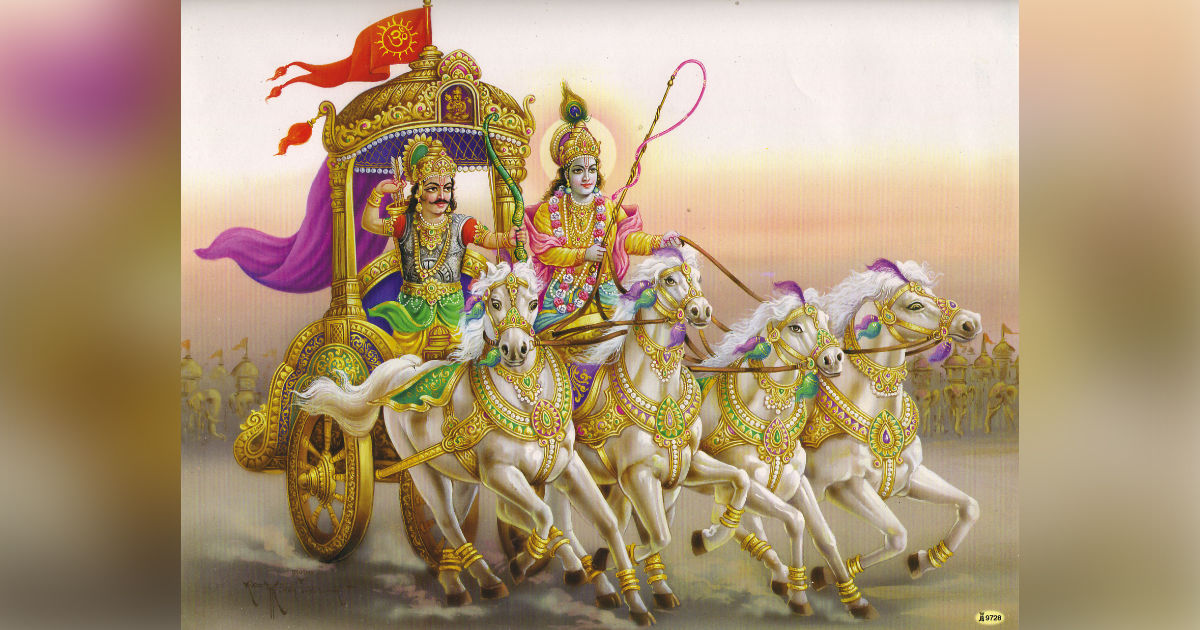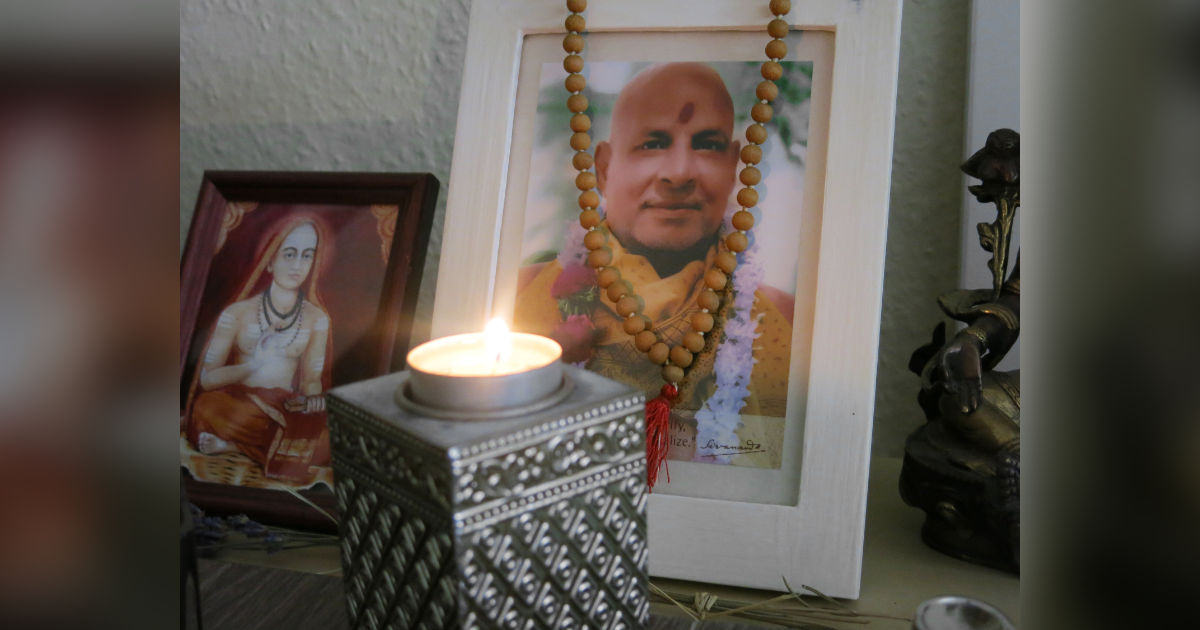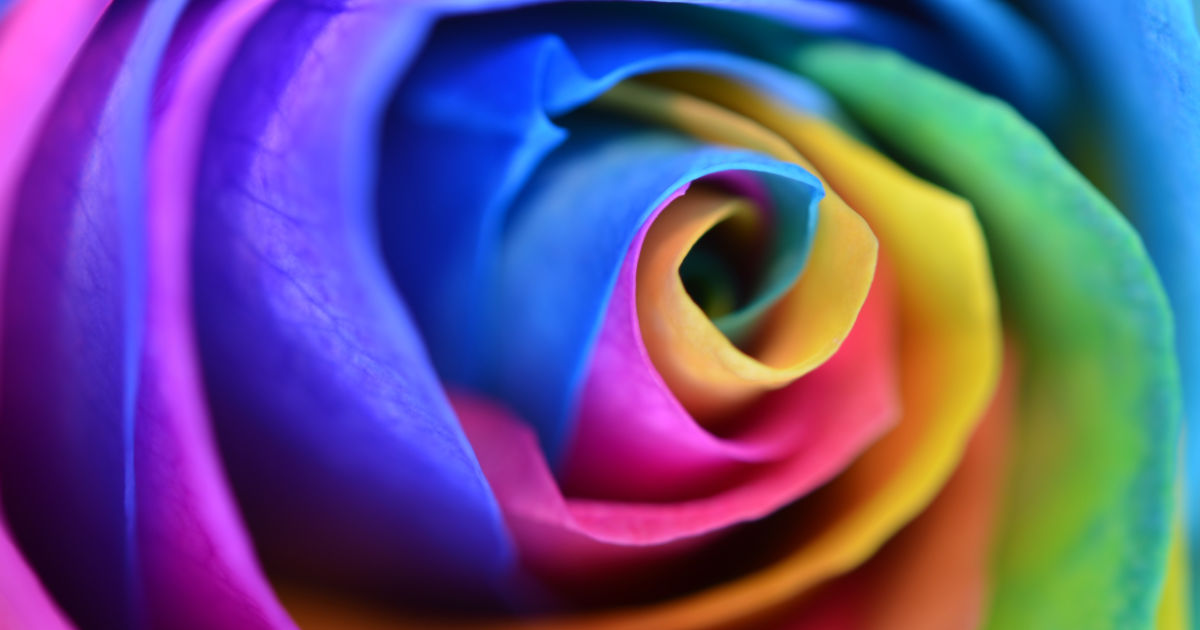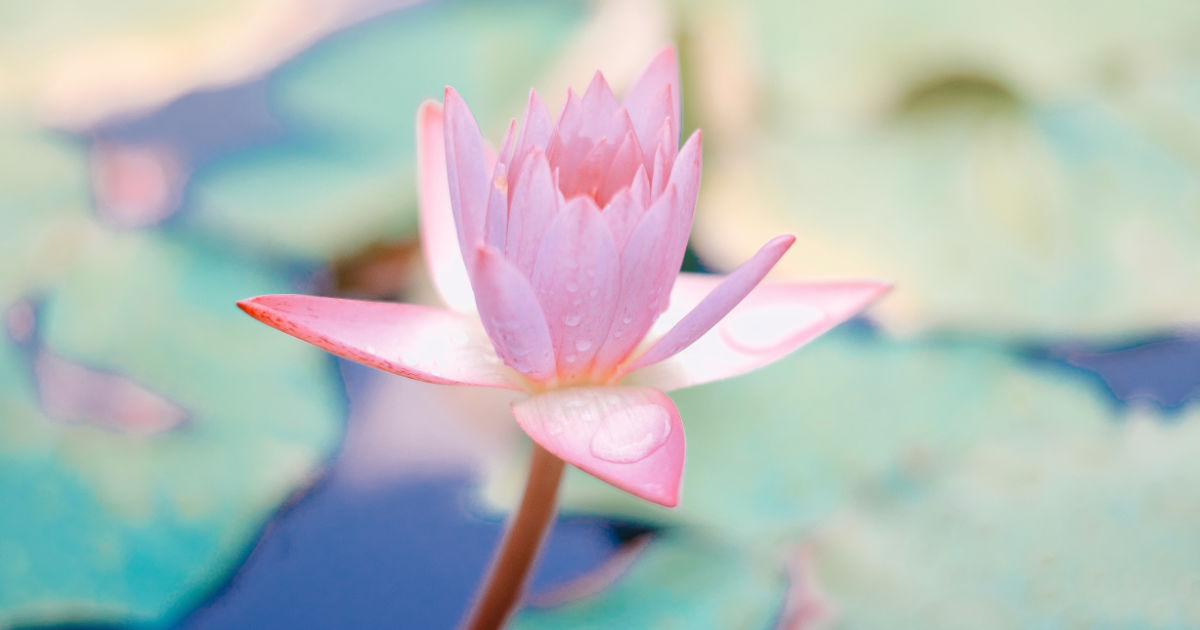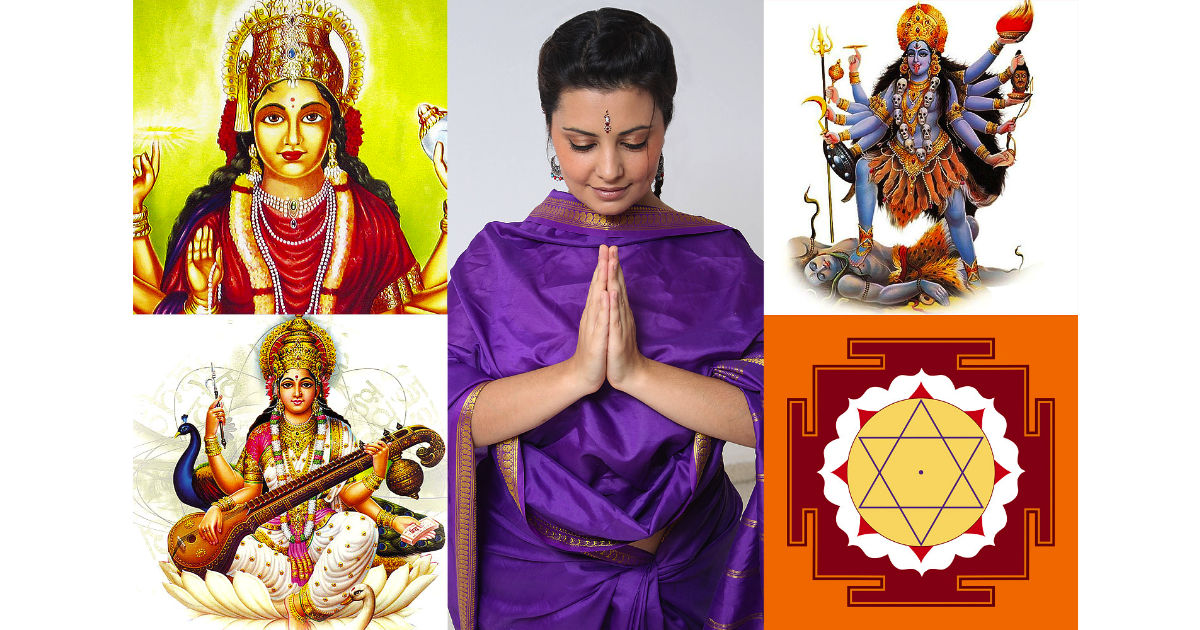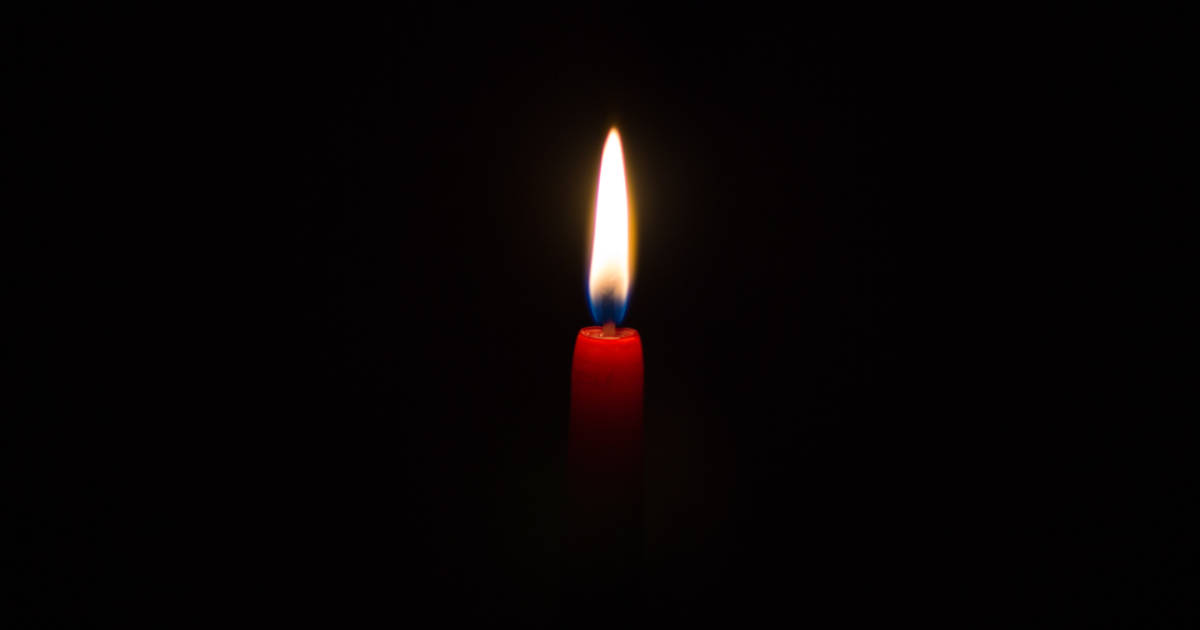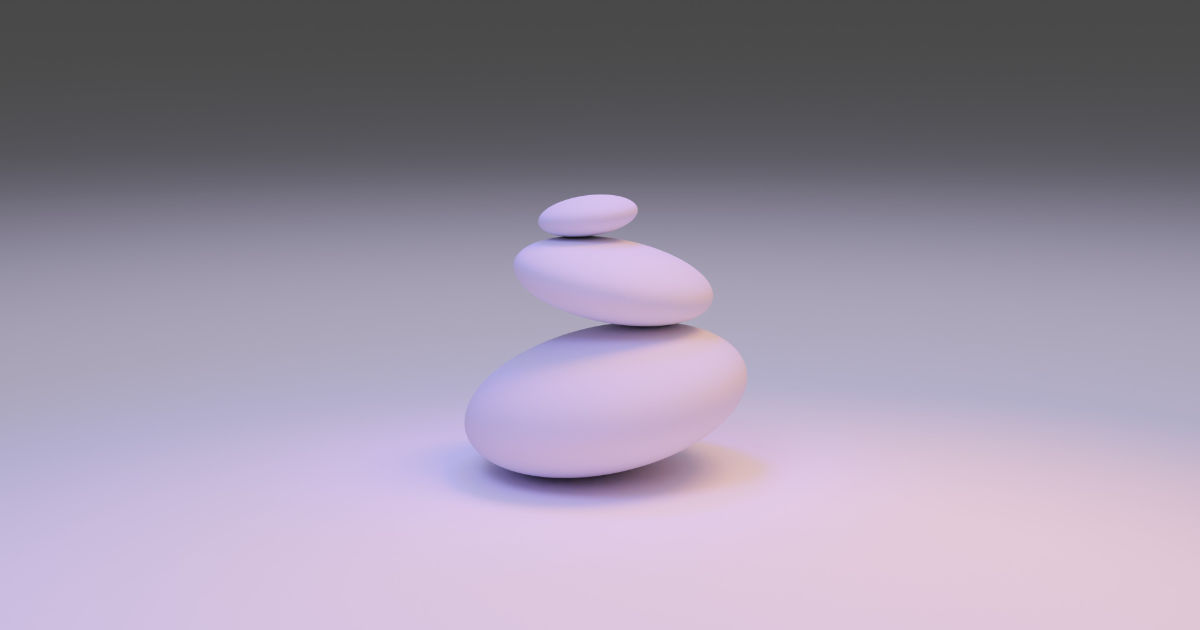The trishul in Shiva’s right hand represents the three Gunas – Sattva, Rajas and Tamas. It is his emblem of sovereignty. He rules the universe through these three gunas. The damaru in his left hand represents the Sabda Brahmin (transcendental sound). Continue reading
Tag Archives: gunas
734 – What are the 3 types of happiness?
In the Bhagavad Gita.
Lord Krishna said that there are three types of happiness and spontaneous bliss through the gunas. The gunas comprise the reason of our existence. Continue reading
718 – What are the 5 states of Chitta?
What is Chitta? It means our feelings because they can go either outward to awareness of ego, which creates lower aspects of the mind or inward and upward, to higher consciousness qualities like self-control, devotion and calmness. It is our subjective feelings and emotions which can convert into objective feelings. Continue reading
608 – The Hindu Code of Conduct
Hinduism is the world’s oldest religion. It is also known as Sanatana Dharma. It is a natural religion and its practices and philosophies are considered accessible to all.
All beings from the smallest organism to man, are considered manifestations of the divine. Hinduism views the universe as a family, or in Sanskrit, Vasudhaiva Kutumbakam. Continue reading
601 – My heart
I am searching for a heart inside me
That’s ebullient by swallowing the entire pain of creation
That’s jubilant by accepting the entire tears of the world
That’s effervescent and clean
May I be able to share with all a heart
Like the earth and sky
Never exhausted by giving. – Nepalese poet Suman PokherelHeart endures when eye does not see. – Turkish Proverb
Meditate on the lotus of your heart. In the center is the untainted; the exquisitely pure, clear and sorrowless; the inconceivable; the unmanifest, of infinite form; blissful, tranquil, immortal; the womb of Brahma. – Kaivalyopanishad
In Sanskrit, the heart is defined as bhava, feeling or sentiment. It is not guided by the intellect or mind. It is natural and spontaneous. When the heart is guided by the mind, then there is constant change in behavior. The outcome is that as long as intellect guides the heart there is emotional and psychological struggles. Continue reading
583 – Accept and respect your body and soul
Guna means virtue and each one of us is blessed with three gunas. They emerge from Prakriti creating the essential aspects of all nature—matter, energy and consciousness. These are tamas (darkness and chaos), rajas (activity and passion) and sattva (beingness and harmony). These gunas are constantly in flux and they are responsible for creating maya (illusion). As human beings we can consciously alter our levels of gunas in our body and mind. Continue reading
420 – Visualization
Modifications in our consciousness.
“Each day watch the colors of your mind.
Until the light shines clearly
And you see straight through
The craving of your senses.
Thus, you will win freedom from experiences
Which carves you to its form
Release from desire which eats you from within.” Swami Satyananda Saraswati.
In Hinduism, colors play a very significant role. Some of the main colors are red, yellow (turmeric), green from leaves and white from wheat flour.
The meaning of the colors
Red is the color used most frequently for auspicious occasions like marriages, birth of a child, festivals, etc. A red mark is put on the forehead during ceremonies and important situations. As a sign of marriage, women put red powder (sindhoor made from turmeric and lime juice) in their hair parting. Red powder is applied to statues of deities, during prayers. It is also the color of Shakti’s strength. A red dress is put on Gods who are charitable, merciful and protective against evil. A married Indian woman is wrapped in red, when she is cremated.
Saffron expresses fire, abstinence and celibacy. Wearing this color also means searching for the light.
Green characterizes peace and happiness.
Yellow is the color of knowledge and learning and it symbolizes happiness, peace and meditation.
White is a mixture of seven colors, and therefore depicts the qualities of each color. It typifies purity and cleanliness. It is also the color of mourning for Hindus. The deities always have a little bit of white on their clothes.
Blue is a color which is everywhere in nature. It is a color which demonstrates stability and strong character. Rama and Krishna are colored blue because they protected mankind against evil.
Violet is associated with oneness with God, peace and wisdom. The lotus flower is of many colors but violet is considered the most sacred.
Last but not least, black is a color which is used to ward of the evil eye. According to Astrology if you wish to harmonize the planetary influences, then black is the color to be worn on Saturday. Black color is offered to the fiercest form of mother. In this color she absorbs everything that she has created.
The colors of the gunas
Prakriti, the Goddess is described as having three gunas. Purity, passion and inertia. Knowledge arises from Sattwa; greed from Rajas; delusion, heedlessness and ignorance arise from Tamas. The Gunas are represented by three colors, Sattwa is harmony and purity, and is therefore white. Rajas is energy and passion and is rendered as red. Tamas is inertia and ignorance and is depicted as Black.
A special visualization for you, before you get out of bed.
Close your eyes. Breathe in and out of your nostrils eleven time. Now visualize your breath, while inhaling going in through both nostrils and meeting at the eyebrow center. While exhaling visualize the breath descending form the eyebrow center out of both the nostrils. This is triangular breathing. Do this fifty-four times. See a color in the Chidakasha, the space behind the eyebrow center. Ten minutes stay with the color, if the color changes, no worry. End the practice with becoming aware of the normal breathing process.
All the colors are very powerful in their energy. Do not push to see a particular color.
Aim Hrim Klim
332 – The Maya Tree
The Maya tree sprouts out of the seed from the vrittis (modification) of the mind. In the soil of enjoyments of the world, attachment, and desire water the Maya tree of illusion. Karmas are the fruits while lust, anger and greed are its sprouts. Continue reading
295 – Oh dear, what is my predominant guna?
We have three gunas. Gunas are traits with which each one of us is born with. Tamas is being dull and immovable like a rock. Rajas is being ambitious and egotistical. Sattwa is being rational, and non judgemental. Continue reading
285 – Develop a healthy respect for your food
Eat your food with bhavana (feeling), as a blessing. When you eat your meal, develop respect for what you are eating. Pause and think where your food came from. Where did the wheat grow for your bread, how was it harvested? How many persons were involved in the process? Were they happy when they were involved in the task? Were their stomachs full? The vegetables on your plate where did they grow? Did they receive sunshine, or did they grow under plastic? Continue reading
212 – How do I train my monkey mind
We are all familiar with an agitated and distracted mind. As children we were made to stand in corners or put our fingers on our lips. We were told that our attention span is that of a gold fish’s (five seconds). As adults, we continue give in to our frantic thoughts and try to fight them. Even in a Yoga class, we will fidget. It is not unusual at all. And now we wish to practice meditation. How should we go about it? We could not sit still as kids and this habit persists. As adults we can now be compared to having a monkey mind. It is really frustrating as some of us are not aware of our ineptitude. Continue reading
208 – Chaturtha Pranayama – the perfect pranayama
We all have this question, is there a perfect pranayama which one can practice in front of people unobserved. There are numerous pranayamas mentioned and each one is better than the other. They energize our lungs, stimulate our digestive system, regulate our breath and calm our mind. However, they cannot be practiced without the sadhaka being noticed. Continue reading
168 – The Divine Forms of Devi
Swami Satya Dharma Saraswati was my first teacher at the Ashram. She was an American who came to the Ashram and never went back. She has written about the divine forms of Devi which were the subject of discussion between, the immortal Narada Muni and Lord Vishnu. Lord Vishnu spoke about the divine attributes of the Cosmic Mother, and the description is given in the Devi Bhagwatam (Book 1X). Continue reading
155 – How we should prepare our mind
We must learn and understand the practice of Karma Yoga and Bhakti Yoga. What is Karma Yoga? The word karma is used freely and frankly and all our misfortunes are blamed on our bad Karma. Karma is the real desires created in the mind. When we wish to possess, it is karma. Karma is a movement that takes place within the mind, body or emotions. Continue reading
093 – In search of yourself
There are three attitudes that control our actions. These are the three gunas, which are sattwic, rajasic and tamasic. When our mind is changing, it goes through these phases. These three gunas interface in our universe and with us all the time. Our mind in its infancy is tamasic and its ultimate experience is sattwic. Our nature goes through trials and tribulations and these result in the development of the gunas. Continue reading


